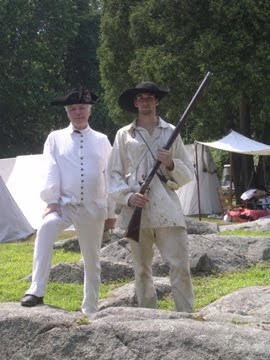 Two new members were elected to seats on the Finger Lakes Museum’s board of trustees at its July 21 st meeting. According to board president, John Adamski, New York City attorney William Gaske, who serves as the museum’s legal counsel, and Village of Aurora vice mayor George Farenthold, were both added to the board in unanimous votes.
Two new members were elected to seats on the Finger Lakes Museum’s board of trustees at its July 21 st meeting. According to board president, John Adamski, New York City attorney William Gaske, who serves as the museum’s legal counsel, and Village of Aurora vice mayor George Farenthold, were both added to the board in unanimous votes.
The board of trustees now has 10 members seated. Former trustee, Don Naetzker, resigned in May to take a paid position as the museum’s Project Director and is now in charge of managing its design and construction.
In other motions, the board elected six members to sit on a newlycreated advisory board including Keuka College president Joseph Burke, former Kodak chairman and CEO Daniel Carp, Yates County Historian Frances Dumas, Fox Run Vineyard owner Scott Osborn, and former Rochester Institute of Technology president Dr. Albert Simone. Albany healthcare consultant Mary Anne Kowalski was elected to chair the advisory board.
Adamski also announced that the board approved a motion to retain Brakeley Briscoe, a Connecticut consulting firm, to develop strategies for a capital fundraising campaign in an effort to raise up to $40 million. In April, Keuka Lake State Park had been selected as the preferred site to build the museum.
In a parallel move, the board of trustees launched its own fundraising drive, which it calls its 2010 Founders’ Campaign and is intended to raise $1 million in startup funds to hire staff, purchase computers, office equipment, and set up shop at the museum’s operations center in the Branchport Elementary School.
Anyone can become a museum founder for as little as $100 by logging on to the museum’s website at www.fingerlakesmuseum.org. Founders will receive a Founder’s Certificate, vehicle decal, and their names will be permanently inscribed on a Founders’ Wall in the lobby of the museum. The school building was vacant because of district consolidation but has been recently purchased by the Finger Lakes Visitors Association for use by the museum.
The Finger Lakes Museum Project is an initiative to create a worldclass educational institution that will showcase the cultural heritage and ecological evolution of the 9,000squaremile Finger Lakes Region. Plans will call for a freshwater tunnel aquarium, a glacialgeological exhibit of the Finger Lakes, outdoor wildlife habitats, and an auditoriumtheater to be built at the Keuka Lake State Park site. Opening is scheduled for spring in 2014.
For more information see www.fingerlakesmuseum.org






